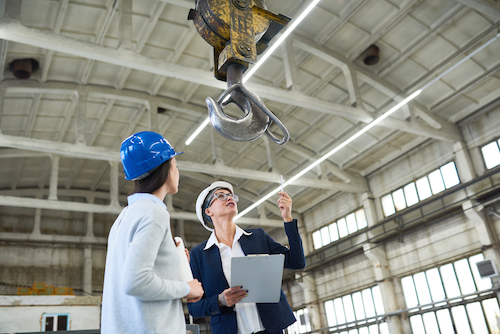
Construction is a massive business in the UK not only for builders, architects, and suppliers but also for thieves and other criminals.
Every year, millions of pounds are lost from the industry in the form of stolen materials, tools, and equipment so ensuring your site is as secure as possible is vital to retaining your profit margins and keeping your staff safe at all times.
By following these 6 simple tips, you will be able to develop and implement a successful building site security plan to keep your staff, the general public, and your equipment, safe from harm throughout the duration of your construction project.
1. Conduct a site risk analysis
The best way to know exactly what security measures are best suited to protecting your construction site, is to carry out a full risk assessment of the site before the project has begun.
By identifying potential weak spots on the perimeter, identifying what materials and tools will be on site and when, and considering any changes to circumstances or staffing that may occur mid-project, you will be able to work out where your security needs to be focussed and start to develop a security system.
Conducting a risk analysis without previous security experience can be a difficult task so you may decide to use the services of a professional security firm.
Not only will they be able to use their many years of experience to identify what precautions need to be taken they will also have the facilities to put them in place.
Most professional security firms will be able to supply alarm systems, security officers, and CCTV all in one go, saving you time and money getting multiple quotes and hiring a number of different contractors for your security services.
2. Immobilise Vehicles and Secure Equipment
Vehicles and heavy machinery used in construction are extremely expensive, and it is, therefore, no surprise theft they are commonly the target of theft.
To make sure that the equipment on your site is protected, ensure that all your vehicles’ keys are removed when not in use and secured by an immobiliser.
You should also store as much equipment and tools as possible in storage containers or shed overnight as the fewer expensive items visible on your site, the less attractive a prospect breaking in is to a thief.
3. Secure the Perimeter
One of the best ways to prevent trespassing on your construction site, especially from children who could see the site as a shortcut or exciting playground, is to erect a secure perimeter preventing easy access.
It is recommended that all construction sites be secured by a 2m minimum perimeter fence, with weights at the feet of each section to increase stability.
As part of their regular patrol checks, your security guards should examine the perimeter for weaknesses or security breaches to ensure that it remains stable for the entire duration of the project.
4. Install CCTV
Placing CCTV cameras at the entrances and around the perimeter of your site is another visual deterrent to potential criminals.
Should an incident occur CCTV footage can prove critical in the police’s search for the offender and can even be the crucial bit of evidence in a court case.
CCTV also assists your security staff as rather than having to rely solely on mobile patrols to know what is going on around the site, they will not be able to keep an eye over a vast around of land without leaving the central control panel.
Combined with effective access control and sign in sign out procedures, CCTV will allow you to track exactly who enters your site and when, making keeping the site secure a much easier task.
5. Training is key
You could have the best security and safety protocols in the world, but this means very little if your staff are unaware of them or do not follow them correctly.
Once you have designed your security plan in place, including things such as escape routes, emergency response, and fire evacuation, it is essential that all your staff undergo the correct training.
Training should involve all existing and new staff being informed of all security and safety regulations and procedures through a standardised training plan, plus additional specialist training related to their specific job role.
This initial training should be backed up by regular refresher courses and evaluations.
By including all members of staff in this process you will not only ensure that safety protocol is followed correctly, limiting risk and reducing the chances of accidents, you will also give them confidence that they are in a safe and secure working environment.
A secure working environment is critical to workplace productivity meaning that security training may actually result in your project being delivered in a more efficient and smooth manner.